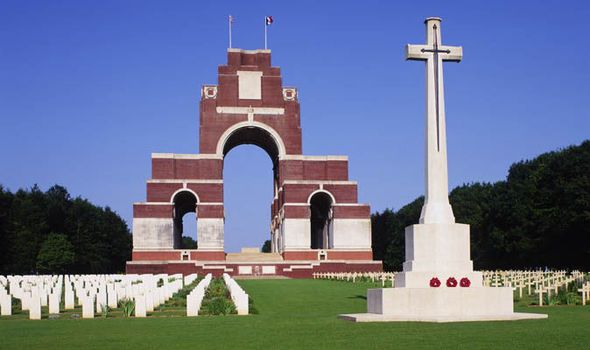Ditchling Men at the Battle of the Somme, July 1916

The Battle of the Somme began on July 1st 1916 and continued until November. For a week before the initial attack the British artillery staged a bombardment aimed at damaging the enemy trenches and support areas but also, crucially, to cut the German wire and make a way through for the assaulting infantry. The barrage of fire which began on June 24th could be heard in Sussex but where many shells failed to explode the wire remained intact.
At 7.30am on the perfect summer morning of July 1st 1916, the whistles sounded, the infantry left their trenches and thousands of men walked to their deaths.
Men from Ditchling, Westmeston and Streat had joined Royal Sussex Regiment in August 1914 at the outbreak of war. In July 1916 both the 7th and 8th (Pioneer) Battalions were in action in the Somme area and on July 7th in heavy rain, took part in the attack on the village of Ovillers. After two days of fighting, 21 officers and 440 other ranks were reported killed or missing.
Private George Tingley, 7th Battalion Royal Sussex Regiment was reported missing on 7th July. George had been employed as a gardener and lived in Victoria Cottages, East End Lane. His older brother, Frederick had been the first Ditchling man to be killed in the war in November 1914. George’s parents received a letter from his Commanding Officer informing them that he had been wounded on July 7th and was last seen going down a trench to a dressing station. Nearly year later, in May 1917 they were told officially that he was presumed killed that day.
Private Charles William Waller, 7th Battalion Royal Sussex Regiment, was also missing presumed killed on 7th July 1916. Charles was born in 1879 the son of Henry and Charlotte (nee Miller). He worked as a carter at Park Barn Farm and had three younger brothers and two sisters. Charles’ parents also had to wait until the following May for confirmation that their son was presumed dead. He has no marked grave and his is one of 73,357 names carved on the Thiepval Memorial to the Missing of the Somme, the imposing monument designed by Sir Edwn Lutyens which towers over the French countryside. A cemetery is laid out beside the memorial with 300 French and 300 British graves containing the remains of soldiers found in all parts of the Somme battlefield with only 61 being identified.
Fighting alongside the 7th and 8th Battalions Royal Sussex Regiment at the Somme were the Royal Fusiliers. Lance Corporal Frederick Merritt joined the 8th Battalion Royal Fusiliers. He had been a farm labourer and lived at Forge Cottage, East End Lane. Frederick was killed in action on 23rd July and is remembered on the Thiepval Memorial.
Lance Corporal Leonard Newnham from Ditchling Common joined the 8th Battalion Royal Sussex Regiment in 1914 along with several others from Ditchling. In February 1915 the 8th Battalion became the Divisional Pioneers, unofficially referred to as the Sussex Pioneers, and embarked for France in the summer of that year. During the hard winter of 1915-1916 the Pioneers had the arduous task, often working at night, of constructing and maintaining roads, trenches and bridges. The Pioneers were in action from the opening day of the Somme, laying barbed wire, digging new trenches and repairing roads but on July 13th were sent to Trones Wood to take part in an attack the following day. Leonard Newnham died of wounds received during the attack on July 14th.
Beside Leonard on the night he died was Private Stephen Bateup, another man from Ditchling Common. Stephen, wounded himself in 1918, survived the war but his younger brother Private Samuel Frederick Bateup, 1st/5th Battalion Royal Sussex Regiment died of wounds received on the Somme on July 31st 1916. He has no known grave and his name is on the Thiepval Memorial.
George Tingley, Charles Waller and Frederick Tingley are named on the Ditchling War Memorial and Leonard Newnham and Samuel Bateup are on the Memorials at Streat and Westmeston. Their stories are included in the DHP publication 'For the Fallen of Ditchling' available from our shop.
Frank Mayston, 7th Battalion Royal Sussex Regiment, was wounded at the Somme in July 1916. He was brought home to hospital in Manchester and in a long letter to his parents, Mr and Mrs Mayston of West Street Ditchling, he describes sheltering in a shell-hole before slinging off his equipment and somehow dragging himself back to a trench.
“Oh dear I shall never forget that journey back! I had to crawl along where there was no cover at all and you could hear the bullets going “flip flip” in the ground all around you and the great shells they were sending over were quite close enough to be healthy. Then I came to where the grass was growing and I wriggled through it like a snake until I got close to the trench when I made a dash for it and staggered in somehow. But the sights I saw between the trenches were awful and sometimes of a night when I close my eyes I can see them even now. How I hope they will soon end this awful struggle. Everyone would hope the same if they had seen what I have.”